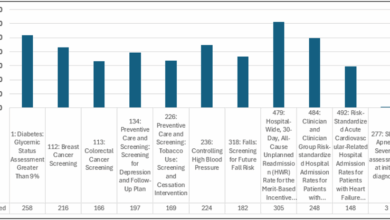how to use face tapping points for emotional relief

Emotional freedom technique, or eft tapping, is a holistic stress-relief method that combines cognitive reframing with acupressure. While its roots trace back to ancient chinese medicine, its current form was popularized in the 1990s.
Today, it is used for anxiety relief, emotional balance, and trauma healing.
Tapping offers a low-risk, accessible tool for calming the nervous system. In this article, we explore how it works, its proven benefits, and how to apply the method yourself.
Key takeaways
- Eft tapping is a simple, accessible method for reducing stress, improving emotional regulation, and promoting overall well-being.
- The practice works by stimulating acupressure points that influence the brain’s fear and stress response, especially the amygdala.
- Face tapping targets several important meridian points and can be practiced anywhere, even without a professional guide.
- Scientific research supports eft’s impact on lowering cortisol and alleviating symptoms of anxiety, ptsd, and chronic pain.
- A structured tapping sequence, along with setup statements and reminder phrases, can help individuals process emotional blocks effectively.
- Eft tapping is a complementary therapy that can enhance mental health routines but should not replace professional care for serious conditions.
- Worksheets, tapping scripts, and visual guides can make learning and applying the technique more practical and results-driven.
- The method continues to gain credibility through both personal success stories and growing research in the psychological and medical fields.
What is EFT tapping


EFT tapping is a psychological acupressure technique that targets the body’s meridian points by tapping them with the fingertips.
Practitioners believe this helps release emotional blockages and reduce physiological stress.
Scientific studies, such as those published in the journal of nervous and mental disease, have shown eft’s effectiveness in lowering cortisol levels.
It is often used for anxiety, ptsd, and chronic pain and is recognized as a complementary approach to traditional therapy.
How EFT tapping works
Tapping sends calming signals to the amygdala, the part of the brain responsible for the fear response. When combined with a verbal focus on the issue, tapping appears to reprogram emotional reactions to stress.
Eft incorporates principles from cognitive behavioral therapy and exposure therapy.
By confronting negative feelings while stimulating specific points, the brain receives a message of safety, helping to deactivate the fight or flight response.
This makes it especially useful for individuals with recurring anxiety triggers.
Face tapping technique


Face tapping is a key part of the eft sequence. Each point corresponds with a meridian used in traditional chinese medicine.
These include the eyebrow, side of the eye, under the eye, under the nose, and the chin. When tapping, apply gentle pressure with your fingers and repeat reminder phrases that identify the issue you are working on.
Photographs included in this article show each point clearly.
Beginners can follow these images to learn proper placement and rhythm.
EFT tapping points and their meaning
The tapping points include:
- Side of hand, small intestine meridian
- Eyebrow, bladder meridian
- Side of the eye, gallbladder meridian
- Under the eye, stomach meridian
- Under the nose, governing vessel
- Chin, central vessel
- Collarbone, kidney meridian
- Under arm, spleen meridian
- Top of head, governing vessel
Each point is associated with specific emotional or physical energy. Tapping across them helps restore overall energy flow.
Eft tapping worksheet and scripts
To help users apply eft independently, a worksheet is available for download.
This includes example setup statements such as, “Even though I feel overwhelmed, I deeply and completely accept myself.”
Reminder phrases might include “this feeling of pressure” or “the tension in my chest.”
The worksheet allows users to rate their emotional intensity before and after tapping and track progress over time.


Benefits of eft tapping


Research supports eft’s benefits in reducing stress, anxiety, depression, and even physical symptoms like chronic pain.
One randomized study showed a 24 percent decrease in cortisol after a tapping session.
Tapping may also enhance sleep quality, increase emotional resilience, and improve focus.
It is non-invasive and can be practiced at home, making it a flexible option for daily wellness routines.
Personal experience and case studies


Practitioners and individuals have reported notable improvements in their emotional well-being after incorporating eft.
For example, one practitioner shared how tapping helped a client manage public speaking anxiety by calming pre-event nerves. Another user found it helped process unresolved grief over several months.
These first-hand accounts, while anecdotal, highlight the practical use of tapping in everyday life.


Conclusion


Eft tapping offers an accessible way to address emotional challenges and support mental health.
With growing scientific interest and positive anecdotal reports, it continues to gain recognition in wellness circles.
Download our free worksheet, try a tapping session at home, or speak with a certified eft practitioner to begin your journey.
Frequently Asked Questions (FAQ)
What is EFT tapping and how does it work?
Emotional Freedom Technique, or EFT tapping, is a self-help tool that combines elements of cognitive therapy and acupressure. It involves tapping on specific meridian points on the body while focusing on negative emotions or physical discomfort.
The technique aims to reduce stress, calm the nervous system, and restore emotional balance.


What are the main EFT tapping points?
The standard EFT tapping sequence includes these key meridian points:
- Eyebrow
- Side of the eye
- Under the eye
- Under the nose
- Chin
- Collarbone
- Under the arm
- Top of the head
Each point corresponds to an energy meridian, and tapping them helps release emotional and physical tension.
Can EFT tapping help with anxiety?
Yes, EFT tapping is widely used to manage anxiety.
By tapping on stress-related meridian points while addressing anxious thoughts, the body often responds with a reduction in symptoms such as racing heart, tightness in the chest, or overthinking.
Studies suggest it may support emotional regulation and reduce cortisol levels.
Is EFT tapping scientifically proven?
While more research is ongoing, some clinical studies show promising results. EFT has been associated with decreased cortisol levels and improved outcomes in people dealing with anxiety, PTSD, and chronic stress.
It is considered a form of energy psychology and is sometimes used as a complementary therapy alongside traditional methods.
How often should I do EFT tapping?
There is no strict rule, but many practitioners recommend daily sessions, especially when working through emotional challenges or stress. Even a few minutes of tapping in the morning or before sleep can offer noticeable benefits over time.
Do I need to say affirmations while tapping?
Affirmations are commonly used in EFT to help the subconscious mind acknowledge and release negative beliefs. A basic formula includes a setup statement like, “Even though I feel anxious, I deeply and completely accept myself.” While not mandatory, affirmations often enhance the effectiveness of the tapping session.
Can EFT tapping help with physical symptoms?
Yes, many users report relief from physical discomfort such as headaches, muscle tension, or fatigue after consistent EFT tapping.
While not a replacement for medical treatment, tapping may complement a holistic approach to wellness by addressing the emotional component of physical pain.
Scientific studies supporting EFT Tapping
One widely cited study, published in the Journal of Nervous and Mental Disease, found that a single EFT session led to a 24 % drop in cortisol levels, significantly outperforming both talk therapy and rest-only groups. – View the study on PubMed
A 2022 meta-analysis published in Frontiers in Psychology reviewed clinical trials and found strong evidence supporting EFT for treating anxiety, depression, PTSD, and chronic pain.
The review classifies EFT as an evidence-based practice when implemented using standardized protocols. – Read the full study
A 2020 replication study published in Psychological Trauma: Theory, Research, Practice, and Policy found that participants who used EFT had a 43 % reduction in cortisol, reinforcing the technique’s ability to reduce biological stress markers. – View the study on PubMed
Resources
- The effect of Emotional Freedom Techniques on stress biochemistry, Journal of Nervous & Mental Disease.
- Clinical EFT as an evidence‑based practice for the treatment of anxiety, depression and chronic pain, Frontiers in Psychology.
- Reexamining the effect of Emotional Freedom Techniques on stress biochemistry, Psychological Trauma: Theory, Research, Practice, and Policy.
- EFT International – Randomised Controlled Trials list. EFT International
- The Tapping Solution Foundation – Science & Research.




